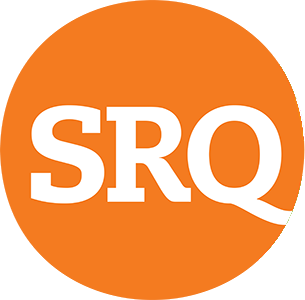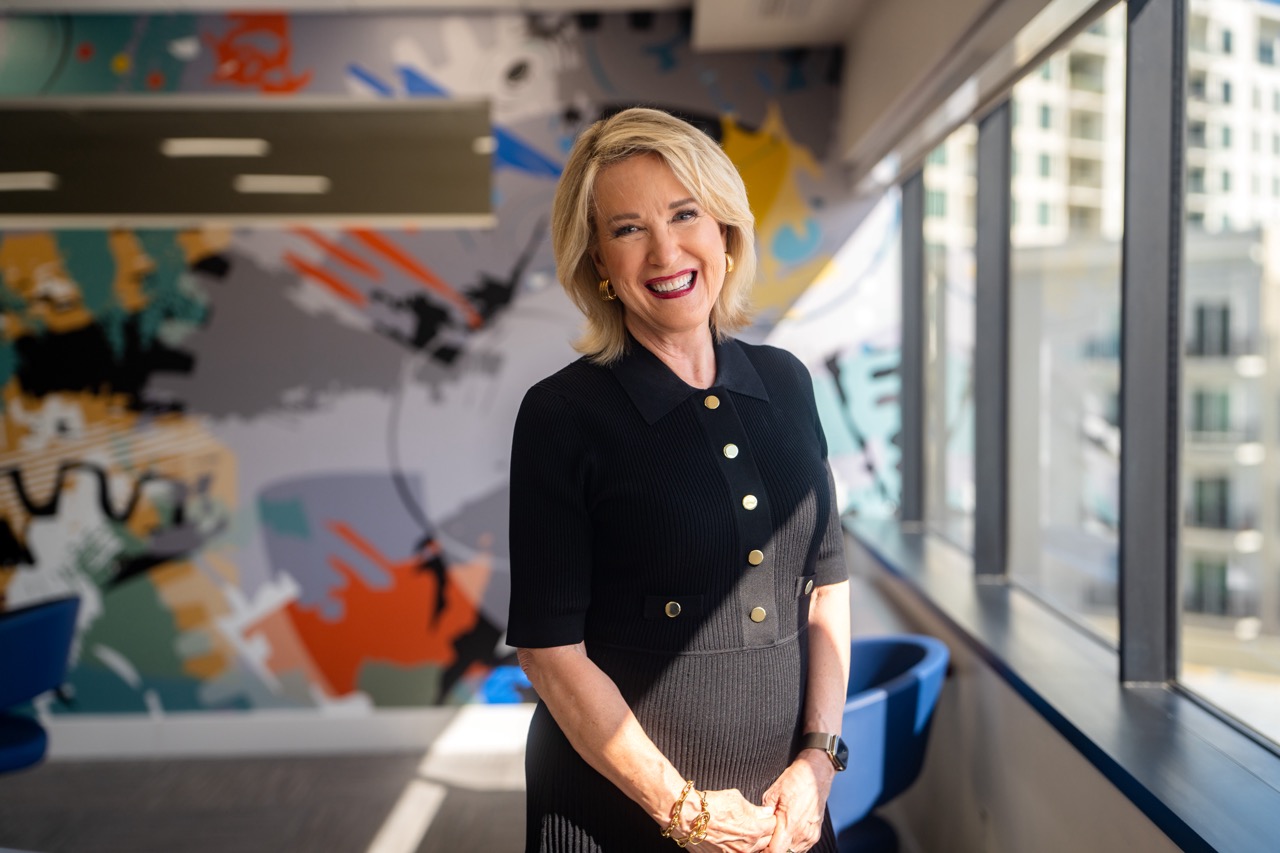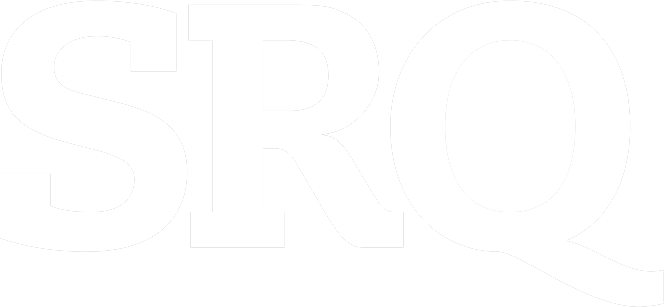Earlier this year, Teri A. Hansen, the president and CEO of Charles & Margery Barancik Foundation for the past 10 years, announced her plans to retire. With decades of experience in philanthropy, Hansen reflects on her most memorable experiences and her plans for the future.
Reflecting on your TEN years as the President and CEO of the Barancik Foundation, what are you most proud of? TERI HANSEN That’s easy. I am most proud of putting together an amazing team—a team of high-performing professionals with passion for our community who work tirelessly to figure out how to make it a better place.
You’ve enjoyed a successful career of more than 30 years in philanthropy. Can you speak to your 13 years of experience as president and CEO of Gulf Coast Community Foundation and how that has shaped your experience at The Barancik Foundation? I would say my two biggest accomplishments in the community are helping to start two big powerhouse foundations. When I was recruited at Gulf Coast, it was late 2001 and the Foundation was five or six years old. It had been a hospital conversion foundation, and the board was still finding its way to what it meant to be a community foundation. Having had experience at the Cleveland Foundation and two community foundations in Indiana, I was able to bring that knowledge and work with the board to create a fully articulated community foundation. Gulf Coast rooted itself in being a community change agent, therefore attracting donors, which then helped them build their charitable prowess, so to speak. Then, when Chuck and Margie, who were donors of ours at Gulf Coast, decided they wanted to activate their private foundation, they asked me to come and start it up. It had money, it had a name and it had a board, but nothing else. So, I was the first staff member and built it to what it became. Before Chuck and Margie passed, the biggest compliment Chuck Barancik ever gave me was to say that he never in his wildest dreams could have imagined having the impact that we had already had. That was the first five years of my tenure. The second five years were then spent getting the money in from the estate and building up the governance and the board, the grant-making, strategies and initiatives. Now it’s time to turn it over to the next generation.
Losing Chuck and Margie Barancik in the tragic accident of 2019 must have been incredibly difficult. How did you navigate leading the Foundation through such a loss and how did their legacy continue to guide you during that time? Their legacy will always continue to guide me as long as I am leading this Foundation. On the evening of the accident, I was at the Sarasota Yacht Club at a cocktail party and heard sirens that went on for a very long time. I knew it had to be something serious. Before dinner was over, I excused myself, walked downstairs to my car, and got a call from one of my board members who had heard there had been an accident and that the Baranciks were involved—one of them was gone and one of them was in the emergency room trauma center. I headed from the yacht club straight over to the hospital and spent the night there. I think I may have gone home at 3am. I guess the good news about me is I’m the person you want when there’s a crisis because I just go into crisis management mode, and so that’s what I did. I remember the following Sunday was their funeral, and then Christmas was right after that. I told people who weren’t in town for the funeral that we would celebrate Chuck and Margie’s philanthropy later, not knowing what that was going to be. I then spent the next couple of months working on that celebration. I told my staff that after that, things would go back to normal, but a few days later, we were working from home because of COVID, so nothing went back to normal. Looking back, I was probably one of the only people in town, let alone the world, who was almost grateful for the world stopping for a little bit because it gave me a chance to grieve and I hadn’t had that chance because I was in crisis mode, trying to keep staff going and motivated and working with the family.
The Barancik Foundation’s response to the COVID-19 pandemic and hurricanes in the region was significant. Can you speak to the challenges and rewards of leading during these crises? One of the most interesting things about the pandemic was how quickly we shifted into action mode—our focus became: how do we help our nonprofits continue serving their communities? Right away, we started organizing group calls and Zoom meetings with them—first daily, then weekly—to understand their needs and figure out how we could support them.
In the beginning, there was a general sense among the nonprofits that this would be short-lived—like a hurricane. They thought, “Give it three weeks, and we’ll be back to normal operations.” I had never lived through a global pandemic—most of us hadn’t—so while I wasn’t sure what to expect, I had a gut feeling this would be more long-term. Our support covered everything from keeping child care centers open—so parents, especially hospital workers, could continue going to work—to helping organizations meet the most basic needs in a rapidly changing environment. And the rules kept shifting. For example, child care centers couldn’t even open without taking everyone’s temperature at the door. One child care center couldn’t open because they couldn’t find a thermometer—they were all sold out, but there was one down in Venice, and so we figured out how to get it from Venice up to Sarasota. That’s how the community pulled together. I remember some organizations were doing their counseling and case management in person, and all of a sudden needed to go virtual but didn’t have the laptops or technology to do so. We were able to get the technology that they needed, and we did this over multiple organizations. We worked with All Faiths Food Bank and Sandra Frank was amazing in getting the food out where it needed to get and working with the school system, which has a summer food program, but all of a sudden it was like summer in March and for those kids, school is where their only real meal came from.
As for the hurricanes, one thing I’ve learned about hurricanes is that each one has its own distinct personality. It makes sense that we give them human names—they vary just as much as people do. Depending on the storm’s impact and the specific kind of damage it caused, our response ranged from providing gift cards for groceries or new mattresses to launching larger initiatives supporting organizations and childcare centers. For instance, many childcare centers lost their fencing, making it unsafe for kids to play outside, even though we all know how important fresh air is for children. We were finalizing our grant docket to present to the board when the hurricane hit. Suddenly, we had to pause, set that docket aside, and create an entirely new round of grants focused specifically on hurricane recovery. The original plans just weren’t feasible anymore. Rather than saying, “Sorry, we can’t do that right now,” we chose a different approach. We reached out and said, “Tell us what you need to get back to your aspirational program—because right now, we know you’re just trying to stay operational.” That level of responsiveness requires a lot of flexibility, and I’m proud to say our team excels at that. They’re quick to pivot, focused on solutions, and never complain about wasted work. The same goes for our board—I can send a quick email explaining the situation and the amount we need approved, and they respond without hesitation. In the end, we supported everything from replacing mattresses to rebuilding playgrounds. It’s about meeting people where they are and helping them get back on their feet—however that looks.
What does retirement look like for you? I want to be a better friend and a better relative. My husband was very ill and ultimately died during my first year at Barancik Foundation. My friends would come into the hospital and sit with him when I couldn’t be there, and I want to be able to give back to friends like this, and to my relatives who’ve been so supportive all these years. That’s my plan.
What advice do you give to the person who steps into your shoes next? It’s a job that needs a great amount of humility. Trust the amazing staff that we have. They can do anything. They’re running their own little businesses, and they just know what to do, when to do it, when to pull a lever, when to push a button and when to pull back. They’re just brilliant. So, just let them run. Let them do what they do best.









